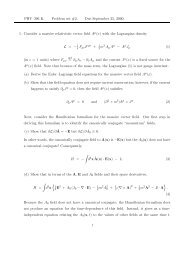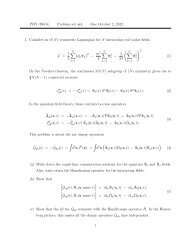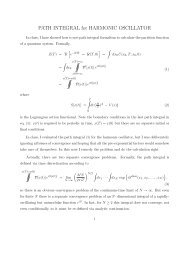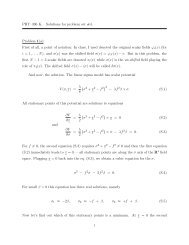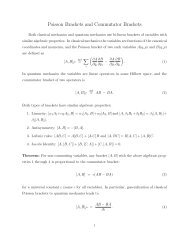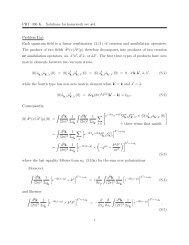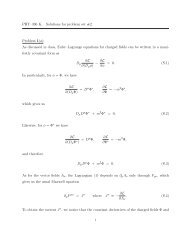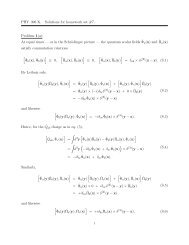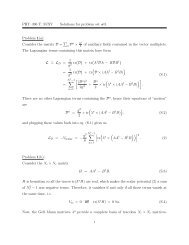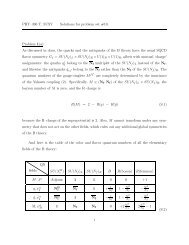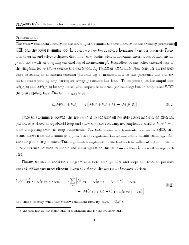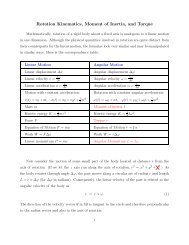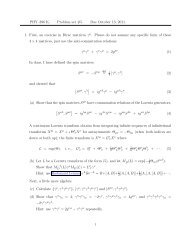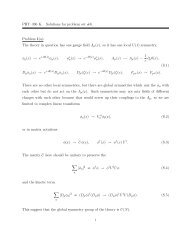PHYâ396 T: SUSY Solutions for problem set #1. Problem 2(a): First ...
PHYâ396 T: SUSY Solutions for problem set #1. Problem 2(a): First ...
PHYâ396 T: SUSY Solutions for problem set #1. Problem 2(a): First ...
You also want an ePaper? Increase the reach of your titles
YUMPU automatically turns print PDFs into web optimized ePapers that Google loves.
<strong>Problem</strong> 3(a):Thanks to D 2 × D α D 2 D α = 0 and D 2 × D α D 2 D α = D 2 × D ˙α D 2 D ˙α = 0, equation (3)impliesD 2 V = − 18m 2 D2 × D α D 2 D α V = 0andD 2 V = − 18m 2 D2 × D α D 2 D α V = 0.This makes the on-shell V a linear superfield. And having established that point, we haveΠ L V = V =⇒ 1 8 Dα D 2 D α V = ∂ 2 V and hence eq. (3) becomes the Klein–Gordon equation(m 2 + ∂ 2 )V = 0.Note that the equation of motion (3) <strong>for</strong> the massive vector field V implies both thelinear superfield equations D 2 V = D 2 V = 0 and the Klein–Gordon equation <strong>for</strong> all thecomponents. This is similar to what happens to the ordinary (non-<strong>SUSY</strong>) massive vectorfield A µ : its free equation of motion∂ µ F µν + m 2 A ν = 0 (S.35)implies both the 4D-transversality equation ∂ µ A µ = 0 and the Klein–Gordon equation (m 2 +∂ 2 )A µ = 0 <strong>for</strong> all the components A µ .<strong>Problem</strong> 3(b):Without gauge fixing, the off-shell vector superfield V has 16 components according toV (x, θ, ¯θ) = C(x) + θ 2 f(x) + ¯θ 2 f ∗ (x) + θ α σ µ α ˙α¯θ ˙α A µ (x) + 1 2 θ2¯θ2 (D(x) − 1 2 ∂2 C(x))+ θ α χ α (x) + θ 2¯θ ˙α (¯λ ˙α (x) +2 i ¯σ ˙ααµ ∂ µ χ α (x))+ ¯θ ˙α ¯χ ˙α (x) + ¯θ 2 θ α (λ α (x) +2 i σµ α ˙α ∂ µ ¯χ ˙α (x)).(S.36)We need to express the D 2 V = D 2 V = 0 equations in component <strong>for</strong>m. This can be donedirectly in the (x, θ, ¯θ) coordinates, but it’s easier to work with (y, θ, ¯θ) coordinates <strong>for</strong> the6



